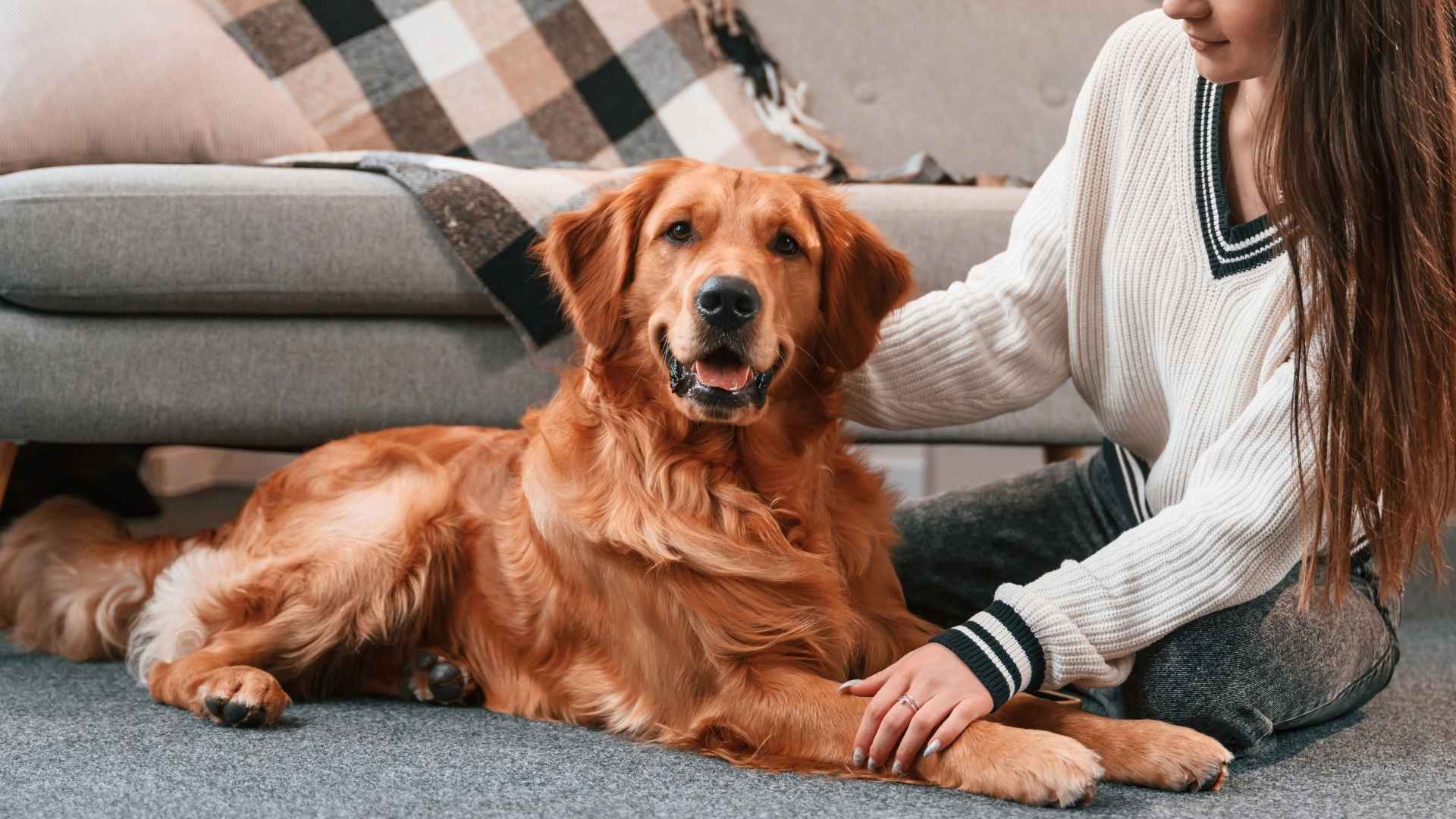Welcoming a dog into your life is an exciting milestone, one filled with tail wags, loyal companionship, and unforgettable moments. But for first-time dog owners, choosing the right breed is key to creating a happy, lasting bond. With so many adorable options out there, it’s easy to get swept up in cuteness. However, it’s essential to consider more than just looks when selecting your first canine companion.
Every dog has its own personality, but breed characteristics like size, energy level, grooming needs, and temperament can help predict what life with your new pet might look like. Whether you’re seeking a cuddly couch buddy, a walking partner, or a family-friendly playmate, finding a dog that matches your lifestyle will make your first pet experience smoother and more fulfilling.
In this guide, we’ll explore the best dog breeds for first-time owners, highlighting those that are easy to train, adaptable, and known for their gentle, loyal nature. These breeds offer the perfect balance of companionship and manageability, helping you start your dog-owning journey with confidence.
Best Dog Breeds for First-Time Owners
1. Bichon Frise
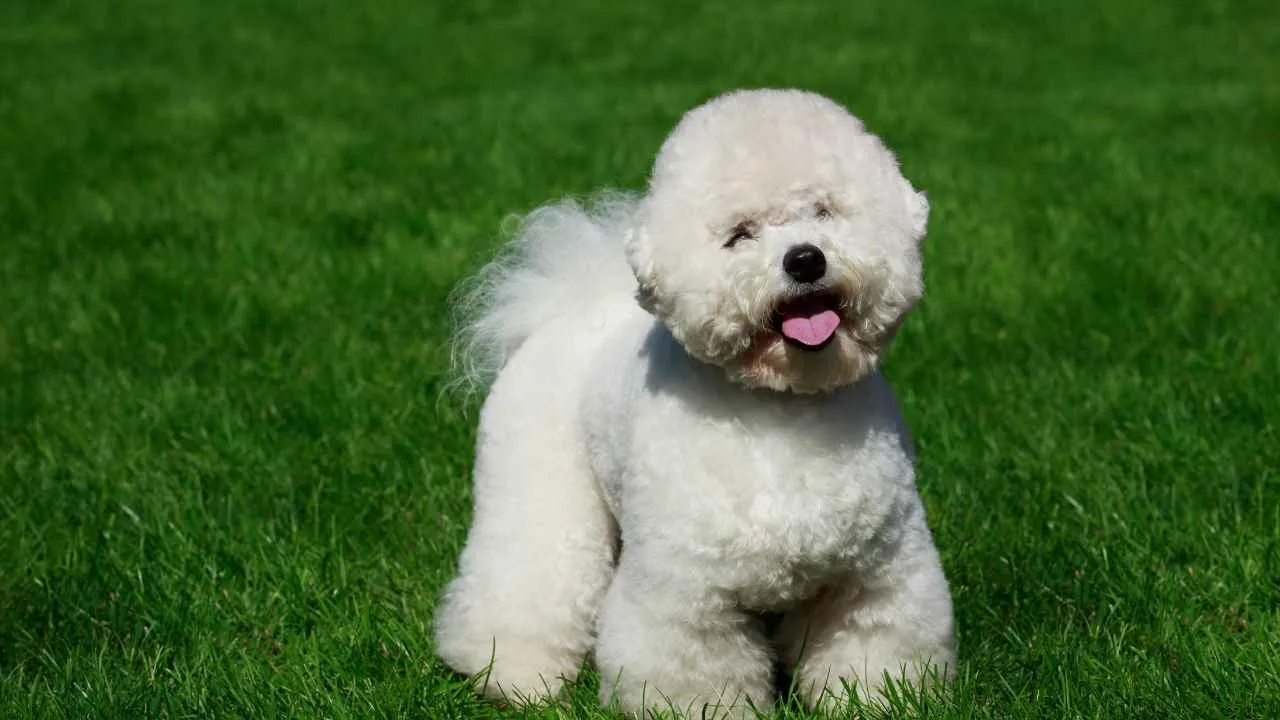
With its cheerful personality and fluffy, cotton-ball appearance, the Bichon Frise is a delightful companion for first-time dog owners. Weighing between 7 to 12 pounds and standing just 9 to 12 inches tall, this small breed adapts well to both apartment living and family homes.
The AKC describes the Bichon Frise as an inquisitive, fun-loving, and lively little dog. Their playful, affectionate nature makes them great dogs with children, and their moderate energy levels mean they’re content with a few short daily walks and indoor playtime.
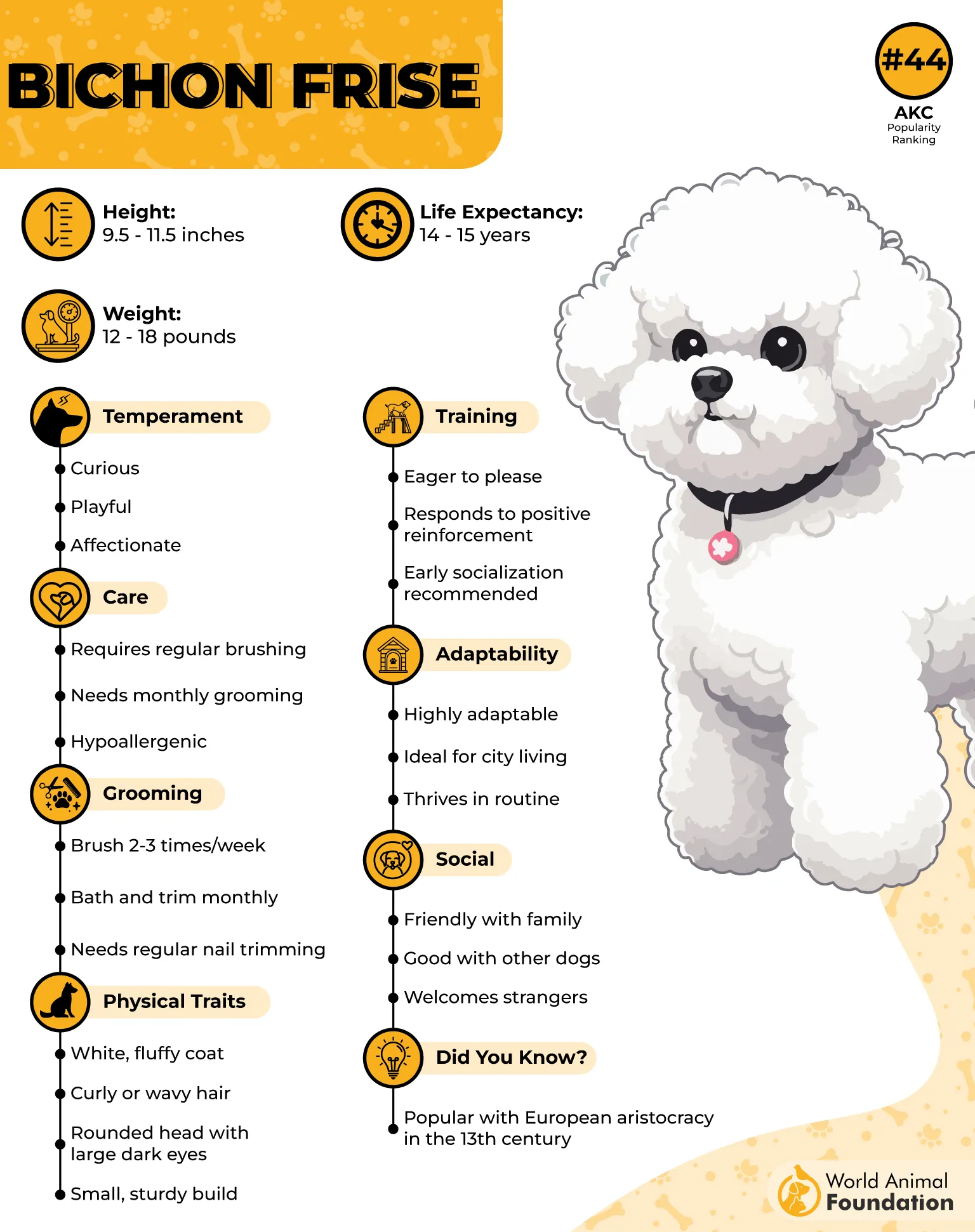
Training
Bichons are intelligent and eager to please, making them highly responsive to training, especially when treats or praise are involved. While they pick up tricks and basic commands quickly, housebreaking can be a bit of a challenge, so consistency and patience are key in the early stages.
They thrive in environments where they’re included as part of the family and don’t do well when left alone for long periods.
Fact: Though Bichons are generally easy to train, they do require regular grooming due to their curly white coat, which should be brushed frequently and trimmed by a professional.
2. Cavalier King Charles Spaniel

If you’re searching for a calm, affectionate companion, the Cavalier King Charles Spaniel is a perfect match for you. Known for their gentle temperament and endearing, puppy-like expressions, Cavaliers are small, adaptable dogs that thrive in a wide range of households. They are naturally friendly toward children, strangers, and other pets, making them an easy addition to most family dynamics.
PetMD explains that Cavalier King Charles Spaniels require plenty of human companionship and can struggle if left by themselves for extended periods. Their moderate energy level means they enjoy a mix of playtime and cuddles, but don’t demand intense exercise.
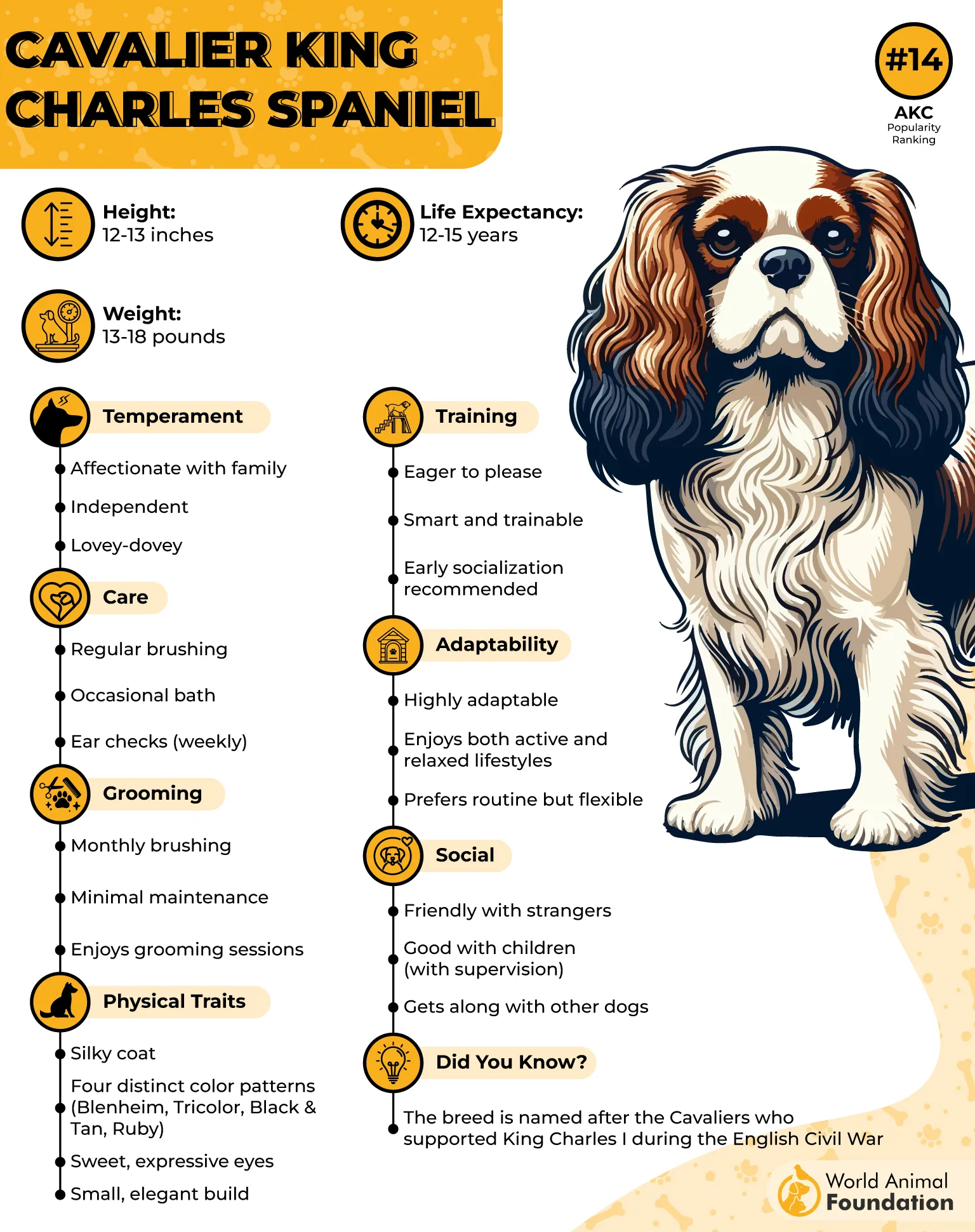
Training
They respond well to gentle guidance, quickly picking up on basic commands and routines. Their desire to bond with their humans helps them stay attentive and cooperative during training sessions. Early socialization will further support their naturally tolerant and patient demeanor, ensuring they grow into well-rounded companions.
Fact: This breed earned its name from 17th-century British royalty, King Charles I and King Charles II were so devoted to these dogs that they famously took them everywhere, including Parliament.
3. Labrador Retriever
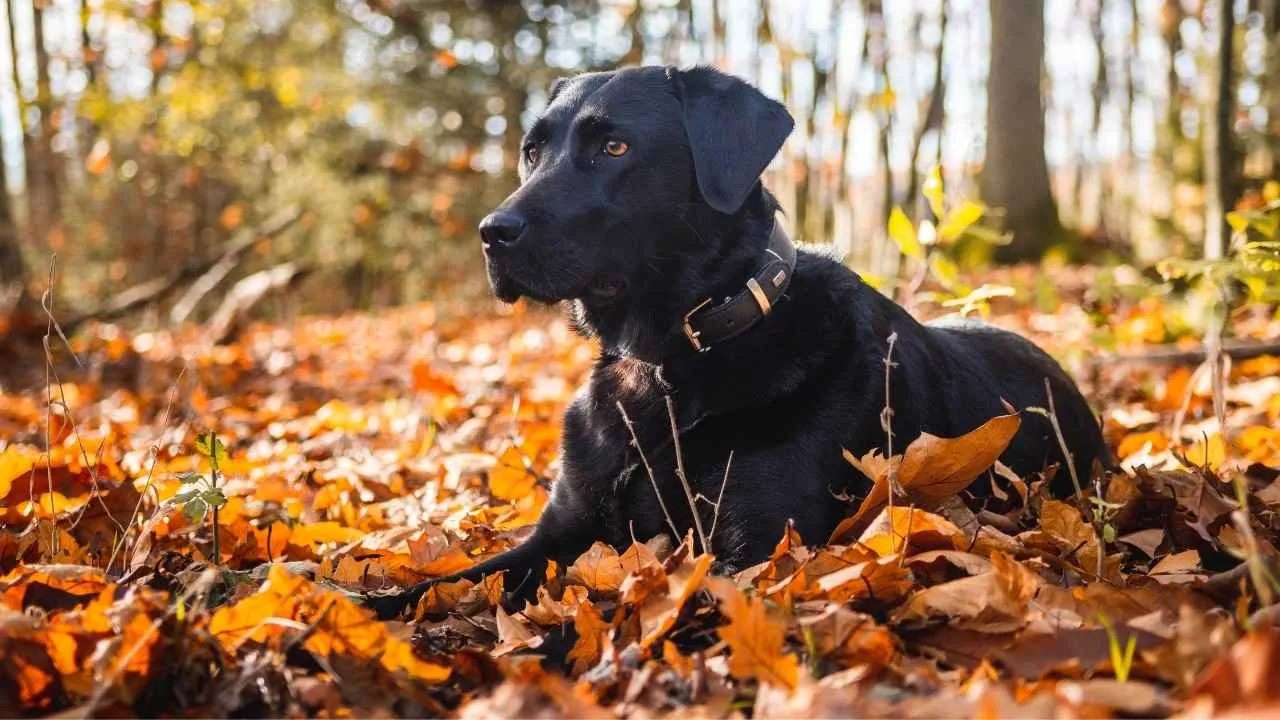
Originally bred as both companions and working dogs, Labs are known for their sociable demeanor, loyalty, and boundless energy. Purina describes Labradors as robust, well-built dogs with substantial bone structure. They have broad heads and gentle, expressive eyes that reflect their friendly and laid-back temperament.
They’re well-suited to active households, as they thrive on long walks, playtime, and plenty of interaction. Labradors are gentle with children, usually get along well with other dogs and pets, and have a naturally joyful personality, making them one of the world’s most popular breeds.
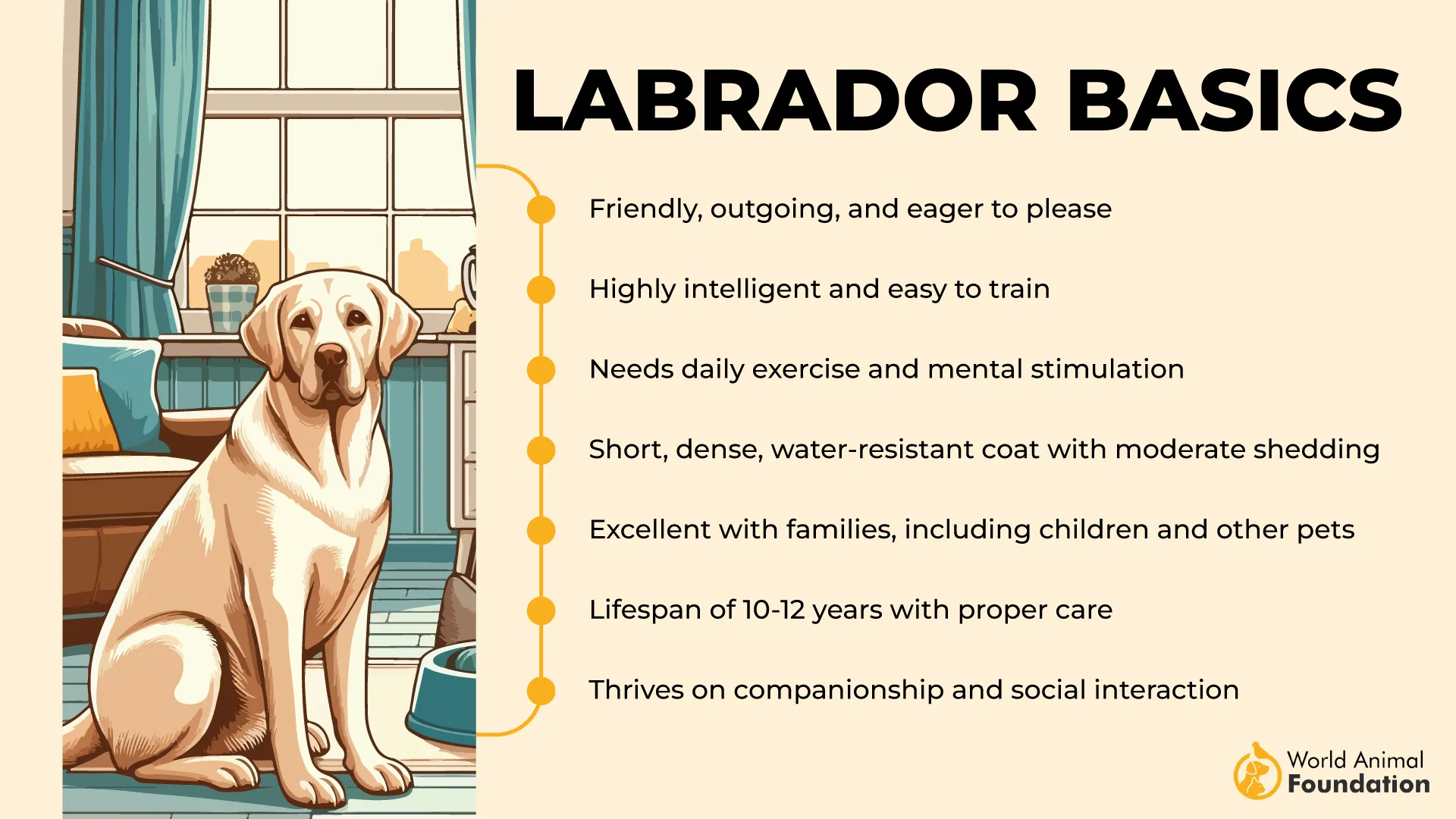
Training
Labrador Retrievers make training a rewarding experience for new dog owners. Their love of dog food can be a useful motivator in obedience work, although it’s important to monitor their weight as they are prone to overeating.
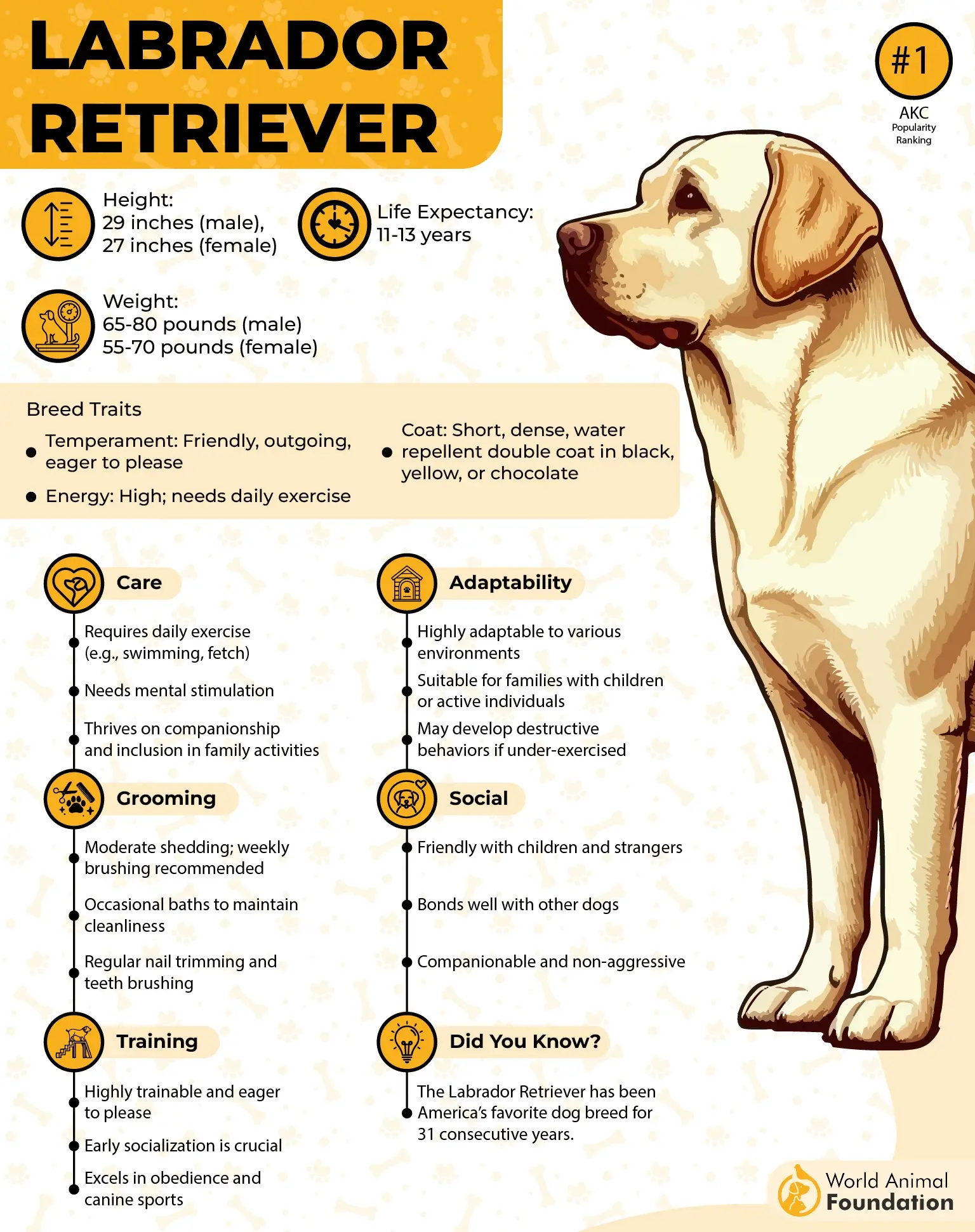
With consistent, positive reinforcement, Labs can master everything from basic manners to advanced tricks. They benefit from early training and socialization to channel their enthusiasm and prevent behaviors like jumping or pulling on the leash.
Fact: Despite being a large, high-energy breed, the Labrador Retriever is well-known for its adaptability, friendly temperament, and trainability, ideal traits for first-time dog parents.
4. Golden Retriever
Friendly, loyal, and endlessly eager to please, the Golden Retriever is one of the most beloved breeds in the world. Weighing between 55 to 75 pounds and standing up to 24 inches tall, this medium-large breed is gentle with children and thrives in active households.
Goldens are affectionate and adaptable, making them ideal companions whether you live in the suburbs or the countryside. According to PDSA, Golden Retrievers are highly energetic dogs that require regular exercise, playtime, and outlets to burn off their excess energy. While they do shed and require regular grooming, their affectionate nature more than makes up for the extra brushing.
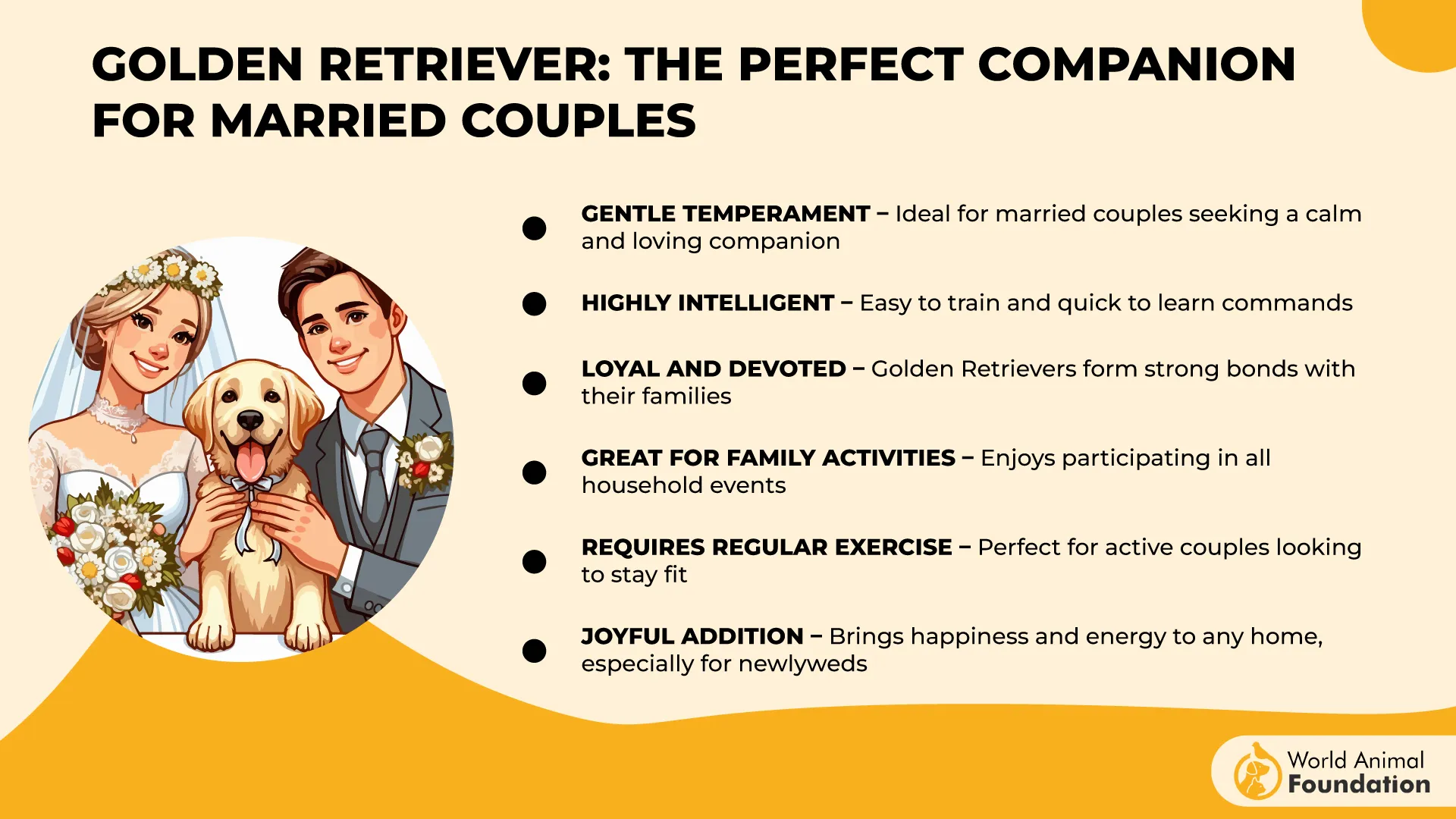
Training
Golden Retrievers are naturally intelligent and thrive on structured training. Their history as hunting companions means they’re wired to learn quickly and enjoy having tasks to complete. Training them is typically straightforward, as they’re eager to engage and love pleasing their people.
Early and properly socialized dogs become confident around new faces and environments. Like most affectionate breeds, Goldens don’t enjoy being left alone for long stretches and need regular interaction and mental stimulation to stay well-behaved.
Fact: Golden Retrievers have a naturally gentle bite, called a “soft mouth”, originally bred to retrieve game without damaging it, showcasing their calm and cooperative nature.
5. Poodle
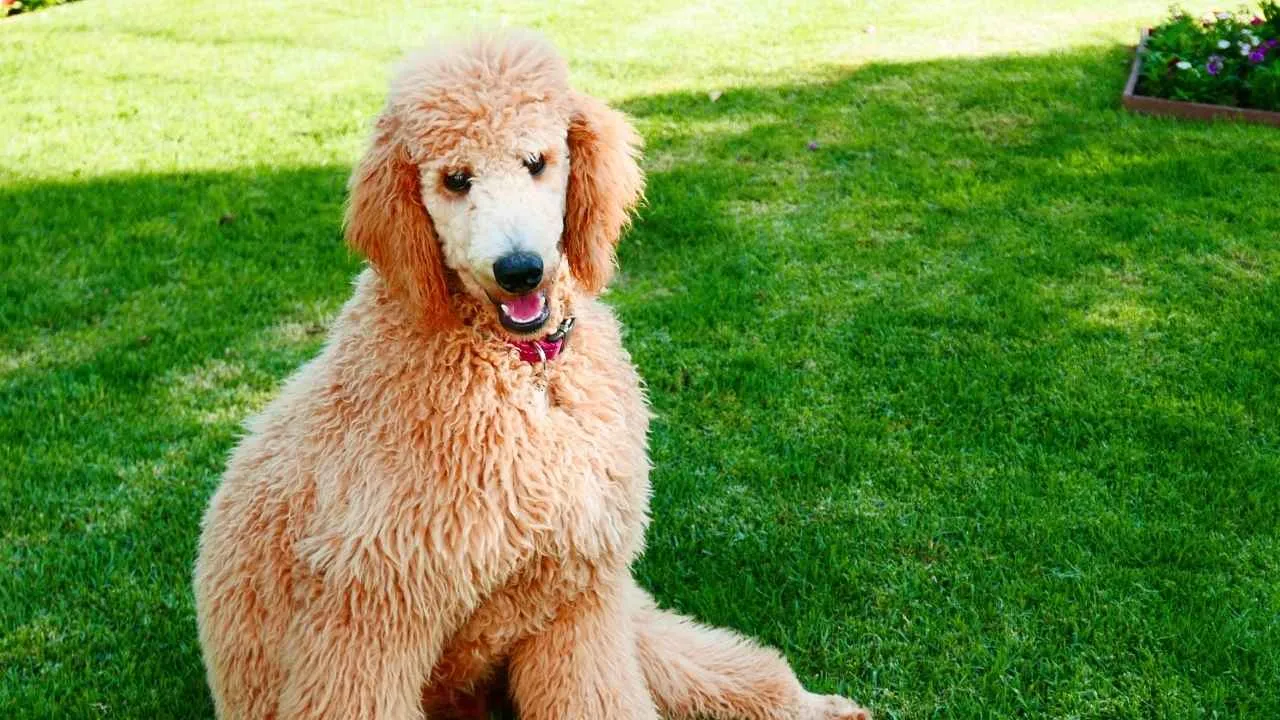
They are elegant, intelligent, and endlessly adaptable. Available in three sizes, Standard, Miniature, and Toy, there’s a Poodle to fit nearly any living situation, from city apartments to spacious family homes.
Known for their low-allergen, curly coats and proud posture, Poodles are much more than their refined appearance suggests. These dogs are playful, athletic, and thrive on companionship, making them a great fit for individuals, couples, or families with children.
Training
Few breeds take to training quite like the Poodle. They are one of the easiest breeds to teach, whether it’s basic obedience or more advanced tricks. All three size varieties respond exceptionally well to positive reinforcement and mental challenges, which also helps prevent boredom. Regular interaction and structured routines will keep their sharp minds engaged and behavior in check.
Fact: Poodles not only excel in training but also tend to be healthy and low-shedding, though their continuously growing coats do require regular grooming to stay in top shape.
6. Boxer
Boxers are affectionate, energetic, and full of personality, making them an ideal choice for first-time dog owners and extremely active people. Medium to large in size, these muscular dogs are deeply loyal and love being involved in every aspect of family life.
Their cheerful nature and clownish behavior often bring a smile to anyone they meet. Boxers bond closely with their humans and are especially fond of children, though their playful exuberance means they’re best suited for families who can match their enthusiasm.
Training
Though young Boxers can be a bit rambunctious, they respond well to consistent training. Early obedience training is key, especially to manage their instinct to jump and paw during play. Boxers thrive on attention and enjoy learning when training is interactive and rewarding.
Socialization from a young age helps them develop into well-mannered companions, and teaching them to keep all four paws on the ground is especially useful in homes with small children.
Fact: Despite their athletic build and protective instincts, Boxers are low-maintenance when it comes to grooming, making them a practical and loving addition to any household.
7. Shih Tzu
They are affectionate, calm, and irresistibly charming. Originating in ancient China and once treasured by royalty, this breed thrives on human connection. With a compact size, typically weighing between 9 to 16 pounds, they’re just as happy lounging at home as they are taking a stroll through the park.
Shih Tzus are also known for being quiet and adaptable, fitting comfortably into both city apartments and family homes.
Training
Shih Tzus are generally responsive to training, especially when positive reinforcement is used. They benefit from early socialization to encourage confident, well-rounded behavior and can get along wonderfully with children and other animals when introduced properly.
While not overly mischievous, they can be a bit curious and may dig or bark if left unattended, so consistent guidance is helpful. Their friendly disposition and moderate energy levels make them easy for new owners to manage.
Fact: Though their long, flowing coat may look high-maintenance, the Shih Tzu sheds very little, making regular brushing the key to keeping their silky fur tangle-free and beautiful.
8. Papillon
Don’t be fooled by the Papillon’s dainty size; this elegant toy breed is full of life, charm, and intelligence, making it the right dog breed for new dog owners. Named after the French word for “butterfly” thanks to its distinctive, fringed ears, the Papillon stands 8 to 11 inches tall and weighs between 6 to 10 pounds.
Despite their refined appearance, these dogs are hardy, energetic, and adaptable, equally content cuddling on your lap or playing in the yard.
Training
They learn commands and tricks quickly. Early socialization and obedience classes are encouraged to ensure they grow into well-mannered companions and to help prevent the tendency to overpamper such an adorable pet. Like many small breeds, they can be sensitive to being left alone for too long, so consistent interaction is important for their mental well-being.
Fact: These intelligent dogs are known not just for their quick wit and graceful appearance, but also for their longevity; many live well into their mid-teens with proper care.
9. Pug
With their wrinkly faces, curled tails, and big personalities, Pugs are beloved for their affectionate and comical nature. This small breed thrives in close-knit households and forms strong bonds with its family, making it an excellent choice for first-time dog owners.
Pugs typically weigh between 14 to 18 pounds and are content with moderate exercise, making them a great fit for apartments or smaller homes. However, due to their brachycephalic (flat-faced) anatomy, they are prone to overheating and should be kept cool, especially in warm climates.
Training
While Pugs are intelligent, they’re also known for being a bit stubborn. Consistency is key; use positive, reward-based methods and ensure everyone in the household follows the same rules to avoid confusion.
Early training and socialization help bring out their best traits, and short, engaging sessions will keep them focused without overwhelming them. Their eagerness to please (and love of treats) can make them surprisingly cooperative when approached with patience.
Fact: A group of Pugs is whimsically called a “grumble”, a fitting term for a breed known as much for its expressive charm as for its clownish antics and royal fanbase, including Queen Victoria.
Conclusion
Choosing your first dog is an exciting step, and picking the right breed can make all the difference in creating a positive and lasting bond. As we’ve seen with friendly companions like the Bichon Frise and the charming Pug, some dogs are especially well-suited for first-time owners thanks to their adaptability, manageable care needs, and affectionate nature. These certain breeds offer a smoother introduction to dog ownership, particularly for individuals and families still learning the ropes of training, grooming, and daily care.
While popular purebreds are often top choices, many mixed-breed dogs also make fantastic pets for new owners. They can offer the best of multiple temperaments and often come with fewer health issues. Don’t overlook different breeds like the loyal German Shepherd, the gentle Bernese Mountain Dog, or the eager-to-please Border Collie, though some of these may require more experience, they can still thrive with dedicated first-time owners willing to invest in training and bonding.
Even breeds like the Soft Coated Wheaten Terrier or Basset Hound can surprise you with their charm and suitability. Ultimately, the best breed for you is one that fits your lifestyle, energy level, and commitment, because well-loved and well-owned dogs make the best companions.


